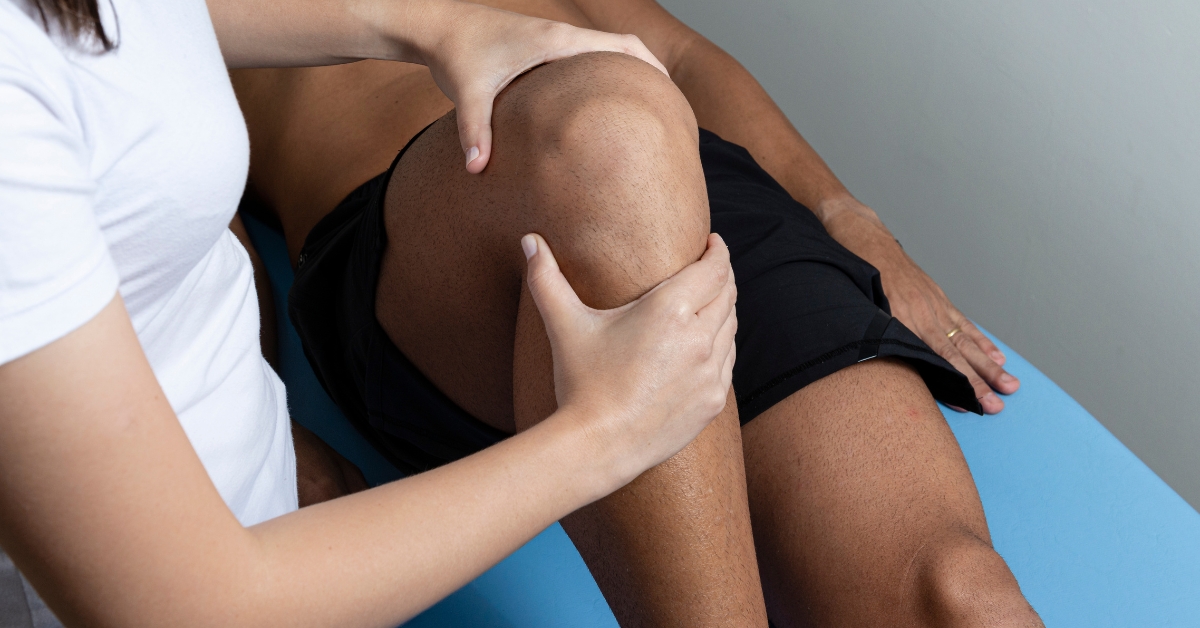When you’re in pain or not moving the way you want, it’s easy to feel overwhelmed by the unknown. One of the first questions that comes up is, “How long does physical therapy take to really work?”
The answer isn’t one-size-fits-all. It depends on your condition, your goals, and how your body responds to treatment.
Average Healing Times for Physical Therapy Treatment to Work
Understanding the Healing Process After Your First Visit
During your initial evaluation and first physical therapy session, we look at how your body moves, review your past medical history, and set clear treatment goals. That first session gives us a baseline and helps us develop an individualized treatment plan that aligns with your sport, activity level, and daily life.
Healing times vary depending on the injury and how your body responds to therapy. While minor injuries may improve in just a few weeks, chronic conditions or post-surgical recovery could involve ongoing sessions over several months.
Factors Influencing How Long Physical Therapy Takes
Not every athlete heals at the same pace. Here’s what can affect how long your physical therapy journey lasts:
- Severity of injury or underlying medical conditions
- Type of sport or movement demands
- Your age and overall health
- Commitment to your home exercise program
- Consistency with therapy sessions
You might just need only a few sessions for simple overuse injuries from weekend games at the Fort Wayne Sport Club.
But if you’re dealing with something like chronic shoulder instability from throwing during Fort Wayne’s summer baseball tournaments, your treatment plan may stretch into the off-season.

Typical Recovery Times by Injury Type
Every condition heals differently. Here’s what you can typically expect from a licensed physical therapist for common sports-related concerns:
Ankle Sprains and Ligament Strains
For mild ankle sprains or general ligament strains, physical therapy typically lasts 2 to 4 weeks.
We focus on restoring joint stability with manual therapy, corrective exercises, and common warm-up exercises tailored to the sport or movement patterns that caused the injury.
Sports physical therapy plays a big role in preventing future injuries. When your ankle regains control and strength, you’re much less likely to roll it again, sprinting downfield or changing direction during drills.
Targeted therapy can also reduce the chances of needing surgical repair later on.
Tendinitis, Overuse Injuries, and Stress Reactions
If you’re feeling nagging pain around your shoulder, elbow, knee, or Achilles, it might be overuse-related.
Physical therapy typically starts making a difference in 4 to 6 weeks with consistent sessions and a committed home exercise program.
At Shield, we see this often after Fort4Fitness training runs or long rides along the Rivergreenway. We design your treatment plan to reduce stress on the soft tissues, correct movement patterns, and improve mobility to stop the damage from progressing.
Getting ahead of overuse early with PT often helps athletes avoid imaging, injections, or surgery down the road.
Chronic Pain, Joint Degeneration, and Neurological Disorders
When you’re dealing with long-standing joint pain—especially in the knees, hips, or spine—your physical therapy journey may last a few months.
However, a strong, individualized treatment plan helps you stay active and avoid surgical options like joint replacement for longer.
These aren’t short-term fixes. They’re part of a bigger plan to help you participate fully in daily life and delay or prevent the need for more invasive medical interventions.
If you’re recovering from injury, dealing with chronic pain, or hoping to avoid surgery, physical therapy may be your next step. Let’s create a plan that gets you moving again with purpose.
Call Shield Physical Therapy and Injury Prevention today at 260-408-8352 to schedule your first appointment. We’re ready when you are.
Rotator Cuff Irritation, Labral Tears, and Shoulder Instability
Shoulder issues are common in overhead athletes—especially swimmers, pitchers, and lifters. These injuries can include rotator cuff tendinopathy, labral fraying, or mild instability.
Your treatment program may last 6 to 12 weeks, depending on the severity. We use joint mobilization, posture retraining, and corrective exercises to rebuild control and power through your shoulder complex.
For many athletes, the right physical therapy program is the difference between regaining function naturally or facing surgical repair.
Patellofemoral Pain, IT Band Syndrome, and Running Injuries
Running-related pain in the front of the knee or along the outer thigh can sideline even the most experienced athletes. These issues often stem from muscular imbalances, poor mechanics, or overload.
With a focus on corrective exercises and neuromuscular re-education, most patients notice improvement in 4 to 8 weeks.
By correcting how your body absorbs impact and distributes load, we can help you keep logging miles—pain-free and without the need for more aggressive interventions.
Hamstring Strains and Muscle Tears
Hamstring pulls are common in sprint-based sports like soccer, track, and football.
Full tears can take months to heal, but minor injuries respond well in just a few weeks.
Your physical therapist will guide you through warm-up exercises, strengthening exercises, and eccentric loading drills to help the muscle heal without scar tissue formation. With the right progression, you reduce re-injury risk and often avoid the need for surgical repair even with moderate tears.
Physical therapy doesn’t just restore function. It gives you the tools to stay strong, avoid surgery, and get back to doing what you love.

What to Expect in a Typical Physical Therapy Session
A typical therapy session at Shield Physical Therapy might include:
- Reassessment of pain and affected tissues
- Hands-on manual therapy or joint mobilization
- Corrective exercises to target muscle imbalances
- Sport-specific drills or warm-up exercises
- Review and progression of your home exercise program
Each physical therapy session is crafted to help you reach your treatment goals quickly and safely.
Your Commitment Is Key to Optimal Recovery
No matter the injury, consistency matters. Showing up to each physical therapy appointment, following your personalized treatment plan, and sticking with home exercises outside the clinic makes all the difference.
We know you’re eager to get back to your sport, whether it’s running along the trails in Shoaff Park or hitting the weights at Spiece Fieldhouse.
Recovery is a team effort, and you’re not doing it alone. We’re with you every step of the way.
How Shield PT Helps You Avoid Surgery and Get Back Up and Running
We Start With a Comprehensive Evaluation
At Shield Physical Therapy and Injury Prevention, your healing begins with a detailed initial assessment.
We look at how your body moves, what causes your pain, and how your past medical history impacts your current condition.
By understanding your movement patterns and identifying affected tissues, we build a plan that goes beyond surface symptoms.
Our goal is to uncover the root cause so your body can heal without surgery whenever possible.
We Build a Personalized Treatment Plan That Works for You
Your recovery doesn’t fit into a one-size-fits-all model.
We design an individualized treatment plan that supports your goals, lifestyle, and timeline.
We use a mix of manual therapy, corrective exercises, and movement retraining to help you regain function.
Whether you’re recovering from a running injury or dealing with chronic pain, our approach is built to restore movement without invasive procedures.

We Help You Stay Active While You Heal
You don’t have to sit on the sidelines while you recover. With the right treatment program, you can stay active in your sport or daily life while recovering in a safe and supported way.
We guide you through:
- Common warm-up exercises to prepare your body for movement
- Sport-specific drills to maintain performance
- Home exercise programs to support healing between sessions
When you move well, your body heals faster. And when you heal properly, surgery becomes the backup plan, not the first option.
We Focus on Long-Term Performance and Injury Prevention
Avoiding surgery is just the beginning.
We want to help you stay strong, reduce the risk of future injuries, and improve how your body performs for years to come.
We assess everything from mobility to strength imbalances so your physical therapy journey leads to lasting change.
Many of our patients see us not just for pain relief but also for performance tune-ups before big events like Fort4Fitness or local athletic competitions in Fort Wayne.
Ready to Start Moving Again Without Surgery?
If you’re recovering from injury, dealing with chronic pain, or hoping to avoid surgery, physical therapy may be your next step.
Let’s create a plan that gets you moving again with purpose.
Call Shield Physical Therapy and Injury Prevention today at 260-408-8352 to schedule your first appointment. We’re ready when you are.

